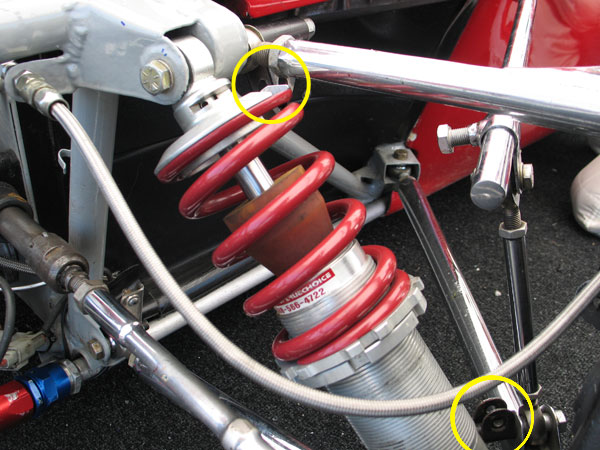I wondered if you gentlemen might educate me about droop limiters - their history, their effects on handling, pros and cons of various droop limiter devices/approaches, etc.
I'm currently studying a March 822 (i.e. 1982 model Formula Two car) and I understand that its owner had its KONI front shock absorbers "droop limited" internally when they were rebuilt. What does that entail? At first I imagined a nylon spacer inside the shock, but I guess a rubber spacer or a spring might work. What's the usual practice? Is this something that might have been installed from 1982, or is it a more modern technique? How common are droop limiters on newer Formula cars?
Obviously there are other ways to skin a cat. For example, a chain or cable could be attached to the mounting tabs I spotted on this older Brabham BT29:
Is a droop limiter something that you'd want one weekend (at one racetrack) but maybe not the next (at another)?
Thanks in advance!





 Reply With Quote
Reply With Quote




